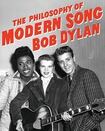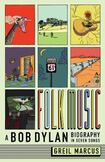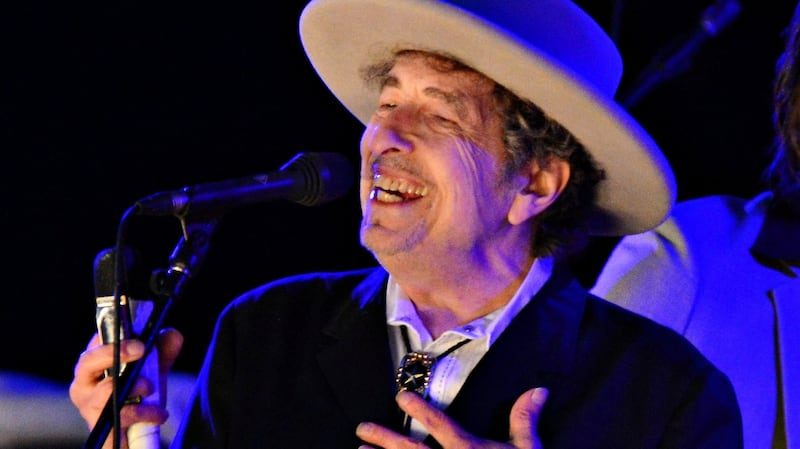

Bob Dylan is more artist than performer. An artist looks hard at a subject, risking the displeasure of an audience; a performer looks hard at an audience, risking the betrayal of the subject. Dylan once called himself “a song and dance man”, but that was an understatement. He admires indifference to audience. Here he praises Elvis Costello for trying any experiment, however bizarre or seemingly naff: “when you are writing songs with Burt Bacharach, you don’t give a f*** what people think”.
Now Dylan has produced a lavishly illustrated volume, The Philosophy of Modern Song, which celebrates modern songs, some well-known but most half or wholly forgotten (Old Violin) and a few which seem forgotten but aren’t really (Whiffenpoof Song by Bing Crosby about “four little lambs who have lost their way” and a chorus “baa, baa, baa”).
This book is in its way a disguised form of autobiography, fuelled by a hatred of divorce lawyers and copyright breakers, as well as a love of the road
Dylan has a gift for empathy which Greil Marcus rightly admires in his new study of the artist’s life through seven key songs. In his own book, Dylan recreates the feel of about 70 lyrics, in a language where passion and precision coincide. It’s a daredevil attempt, because he keeps reminding himself that the odds are stacked heavily against it – the “heresy of paraphrase” when a poem is reduced to a summary, may be compounded when words are detached from a melody.
But Dylan is all for melody, observing that there is something “freeing about hearing a song in a language you don’t understand”. This certainly explains the success of his early Like a Rolling Stone or Visions of Johanna, which seemed at first like messages from a distant planet. But the direct reference here is to a Portuguese fado, which makes your heart burst until it turns out to mean “I cannot find my hat”. Great songs keep their mystery, which is (he says) why few songs during the video age could ever become standards: “We are locked into someone else’s messaging the lyrics.”
READ MORE
A good song should be “both mysterious and direct as a telegram” (that last word is a generational give-away). Analysing music is like dissecting a frog – and the frog\songs dies of it. But Dylan presses on, undaunted. His readings most often enhance the mystery.
The alchemy between singer and audience is therapy, yet the one unburdening pays no hourly fee. “Sometimes people ask songwriters what a song means, not realising if they had more words to explain it they would’ve used them in the song.” Talking isn’t like singing; you can’t say “come here, here, here” but you can in a song. You can even add mere sounds as fillers: “oh, oh, oh, oh” (in Volare), copied in due course by Phil Spector (“whoa, whoa” in Be My Baby). Or anticipated in “baa, baa, baa”.
Despite repeated self-warnings, Dylan prises meaning from songs, which he finds full of codes. The very words rock’n’roll suggest copulation, although Ed Sullivan hardly knew that when he introduced such music to his TV show (nor did he ever guess what Tutti Frutti was really about). The problem today is that songs are all about one thing, containing no codes but heavy (like food menus) with over-wrought adjectives. Not that the hillbilly Shakespeares ever bothered much about adjectives. Enter Hank Williams, Uncle Dave Macon and a cast of dozens.
You will search in vain here for a discourse on the Stones or Beatles: maybe they’re adjectival. Though Dylan once wrote a moving ode to John Lennon, here he sets up The Clash (London Calling) to announce that “phoney Beatlemania has bitten the dust”. The Clash “sneer at the fool on the hill” (though Dylan long had a soft spot for fools and clowns), because they know “that truncheon thing is going to come down on your head while you’re singing Hey Jude”.

Dylan’s choices can sometimes seem surprisingly schmaltzy, a taste which once led Marcus to open his review of a disc of covers with the now-infamous question “what is this sh**?” The latter word was allegedly used by Frank Sinatra about his own Strangers in the Night but Dylan rather gleefully observes that it topped both Paperback Writer and Paint It Black in summer 1966. Today, he laments, “you could never see something like this happen”. This must be another case of lone US ranger against British invasion; or maybe American music is now where Dylan is generally at.
Still, there is almost always method in his seemingly strange choices, leading to brilliant explanations which cast an implied sidelight on much of his work (though he never says so). On the Street Where You Live is really about three-syllable rhyme: street before\feet before, bother me\rather be. If you re-listen to Like a Rolling Stone in light of this, you suddenly realise the sort of songs from which many of its multi-rhyme techniques were honed (“juiced in it\used to it”).
This book is in its way a disguised form of autobiography, fuelled by a hatred of divorce lawyers and copyright breakers, as well as a love of the road. Marcus has chosen the moment to celebrate Dylan’s ability to inhabit a song over and over again: some such as Blowin’ in the Wind always seemed like ones we’d heard before, while others such as Hattie Carroll feel like forever strange ones we have yet to know fully in some future realisation.
Dylan’s gift for empathy (with dead singers, old songs, historical characters) is seen by Marcus in his A Bob Dylan Biography in Seven Songs to explain Murder Most Foul, that fairly recent hit (his longest at 16 minutes 56 seconds) which meant that he had a best-seller in every decade of his career. Marcus rightly says the song is about the mighty dead, not just JFK. Like Dylan, he can be sniffy about perfectly good songs (he dislikes What Have They Done to the Rain?) and somewhat indulgent of what some may regard as the gender prejudices of past male singers.
Dylan tries to anticipate such critiques (“before the feminists chase me through the village with torches”), by arguing that he claims no freedom for men which he would ever deny women.
His book is superb; and Marcus’s, as ever, very very good.
Declan Kiberd works at University of Notre Dame (Dublin). He is co-editor of The Book About Everything, a recent collection of essays on Joyce’s Ulysses.
Further reading
If you are looking for more on Bob Dylan, the best starting point is his 2004 autobiography Chronicles Volume One (there never has been a volume two!). It is by no means a full account of his life but it is a brilliant attempt by him to trace the mystery of creativity; how unaccountably it comes and how just as unaccountably it goes.
Its spiralling structure reminded me of Stephen Spender’s autobiography, World Within World, which also regarded sequential chronology as an evil to be avoided. It’s also very funny and slyly self-referential. On being presented with a copy of Ulysses by his recording company CBS, he says that he could see that Joyce was a lord of language but had no clue as to what he was saying – just the way many felt about his own great albums such as Blonde on Blonde.
For a full and expert biography, see Robert Shelton’s No Direction Home; a revised 2021 edition has great graphics and updates. For an authoritative guide to the background out of which the lyrics emerged until 2015, see All the Songs: The Story Behind Every Track by Philippe Margotin and Jean-Michel Guesdon, which also has lovely analyses, right-on illustrations and spot on sidebars about productions, performances, the lot.














